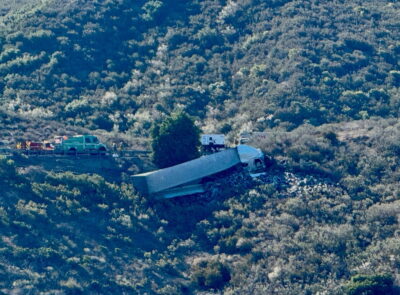The summer vacation season is in full bloom, and the holiday season is just around the corner. With the hot and sunny weather, US residents are looking for the perfect place to spend their time off and recharge their batteries before work comes calling.
As usual, during this time of the year, traffic is almost unbearable with so many vehicles on the road. If you add tourists coming from outside the US to the equation, traffic jams become a daily occurrence.
And with traffic jams, there’s a higher risk of car accidents. Unfortunately, car accidents are one of those things no one ever wants to think about, yet not a day goes by without a car accident taking place.
Whether it’s a minor bump in a parking lot or a serious crash on the highway, how you handle those first few minutes after impact can make a significant difference.
That’s why, before going on your trips, it’s best to have an emergency kit prepared beforehand. You could use the emergency kit to treat minor wounds or help an injured party.
Having an emergency kit can really be life-saving, especially if you’re driving through remote areas where it’s not that easy to get to a hospital.
Not sure what to pack in your kit? No worries, we’ve prepared a short guide for you. Keep reading to make sure you have a safe trip ahead.
Why having an emergency kit matters
In the moments immediately following an accident, you may feel disoriented, panicked, or unsure of what to do next.
Having the right tools within reach allows you to take control of the situation. A thoughtfully prepared kit can help you treat minor injuries and document important information. It also ensures that you’re not relying on your memory or luck during a stressful time, cause let’s face it, in those moments, your memory will fail you.
And with more than 40,000 car accidents in the US annually, it’s a good idea to be prepared and have a kit even if you never get to use it.
What your kit should include
What you pack in your kit will depend on where you’re traveling to. If you’re travelling to a sunny beach in Florida, you’ll probably pack different items than if you’re planning a mountain getaway in Indiana.
Start with the basics
A compact but complete first aid kit should be at the heart of your emergency setup. Things like bandages, antiseptic wipes, antibiotic ointment, gauze, and gloves will allow you to treat cuts, scrapes, or minor burns.
Pain relievers and basic medications are also helpful, especially if you or a passenger suffers from chronic conditions or allergies.
Equally important are your documents. Having quick access to your license, vehicle registration, and proof of insurance saves time and reduces confusion if law enforcement is involved. It’s better to bring all the documents you can think of as relevant because the law system is different in each state, and you never know which papers you’ll end up needing.
Include a written list of emergency contacts and any relevant medical information, just in case you’re unable to communicate everything yourself.
Prepare for the bad weather
When it comes to staying safe on the road, visibility matters. Items like a reflective vest, flashlight, and roadside warning triangles will help you remain visible to oncoming traffic, especially if the accident occurs at night or in low-visibility conditions.
These items can be crucial for your protection, particularly on high-speed roads. These definitely come in handy if you’re travelling to areas with unpredictable weather.
As mentioned, anyone planning a trip to Indiana(a state well known for its extreme weather conditions) needs to be prepared for the bad weather, as this is one of the leading causes of car accidents in Indiana.
The important thing to remember is that, if you do end up in an accident, you can always contact a car accident lawyer to help you with the legal process. That’s why it’s also a good idea to research some nearby law firms before heading for the trip.
Charge your phone
We know this one may seem obvious but that’s exactly why many forget about this step. Never underestimate the importance of communication. A fully charged phone is a must. That’s why a backup charger or portable power bank should always be in your kit. It’s also wise to keep a small paper card with phone numbers, in case your device is lost, dead, or damaged in the crash.
Don’t forget about your passengers
If you drive with kids or pets, tailoring your kit for them can help keep everyone calm. A small toy, coloring book, or child-friendly snack can really come in handy if you’re trying to calm a nervous child.
If you’re travelling with a baby, make sure you find some interesting and engaging activities for them that are age-appropriate.
For pets, pack an extra leash, a collapsible water bowl, or a towel to help manage mud or mess if they’re in the car when the accident happens.
The final word
It’s almost impossible to prevent an accident if it’s destined to happen, but you can always make sure you’re prepared to act in case it does happen.
A car accident emergency kit is one of the simplest ways to ensure your safety, protect your passengers, and handle unexpected events with calm and confidence. It doesn’t require a huge investment, just a bit of planning and organization.
In the end, even if you don’t ever use the emergency kit(and we do hope you never have to), you can always keep it in your car whenever you go on a trip.
No matter where you’re going, an emergency trip can give you peace of mind, and you’ll feel more relaxed knowing you have a backup plan.






